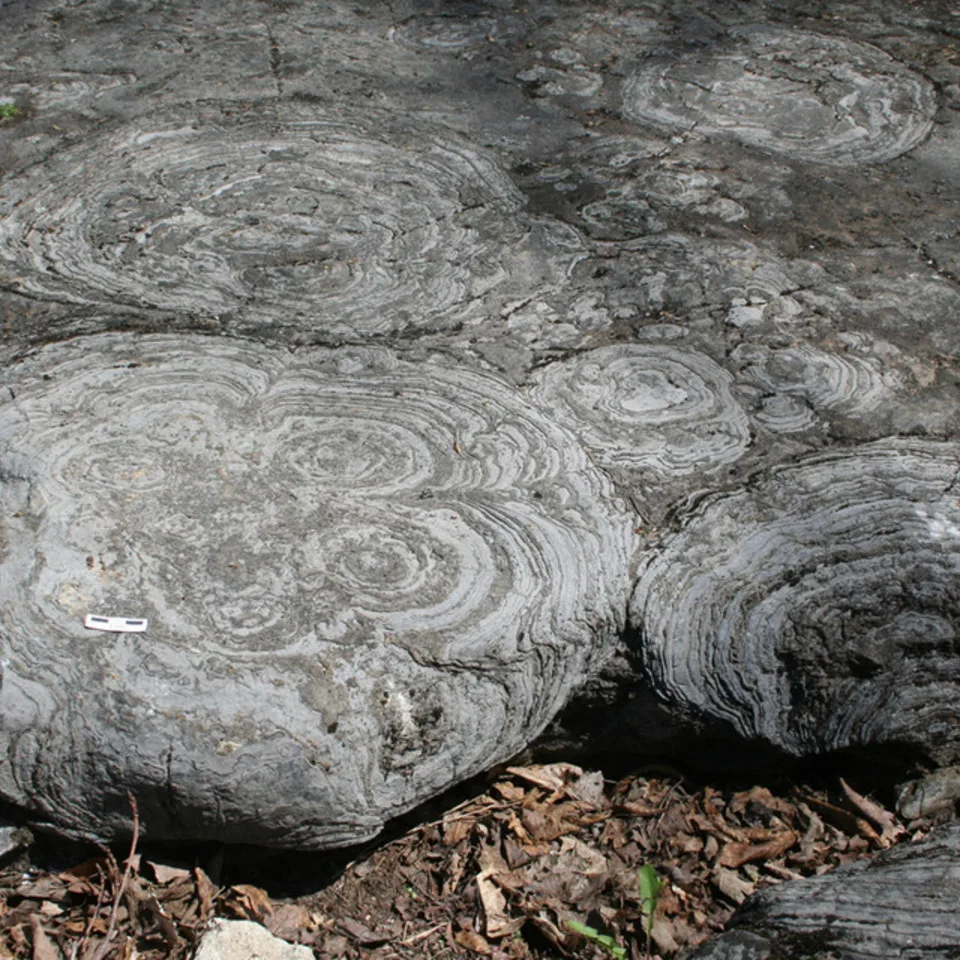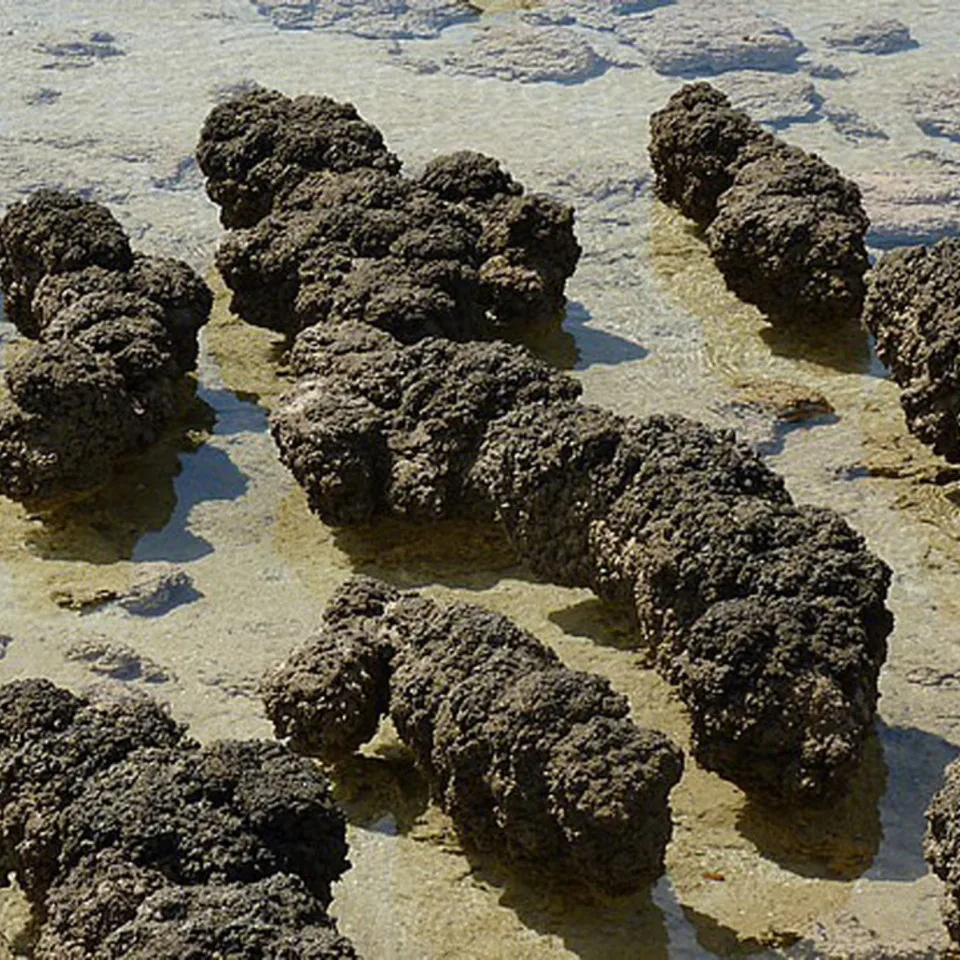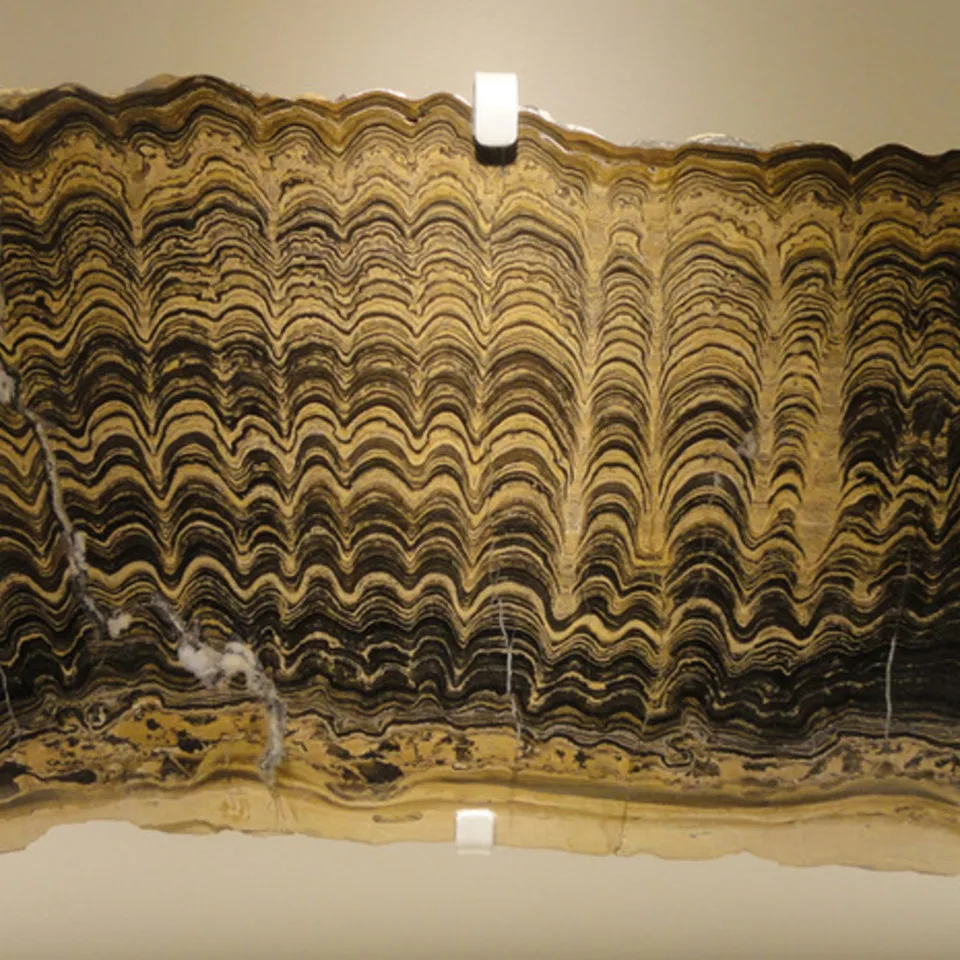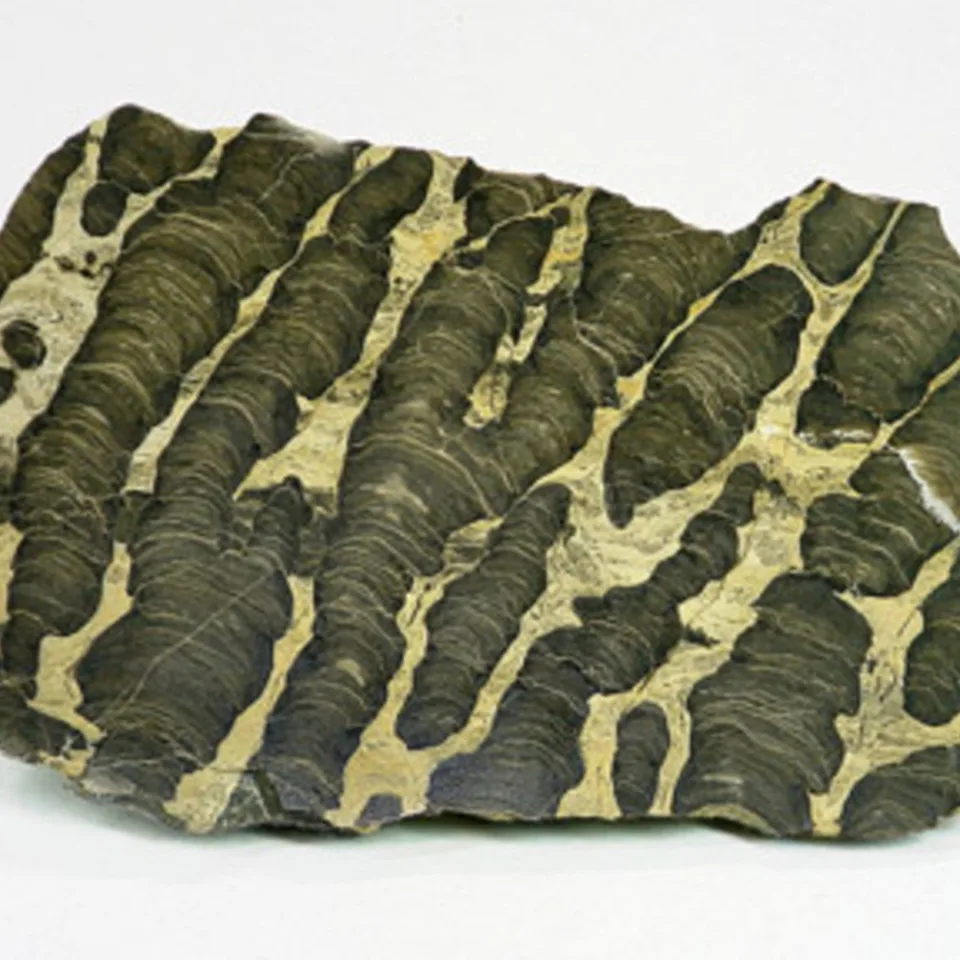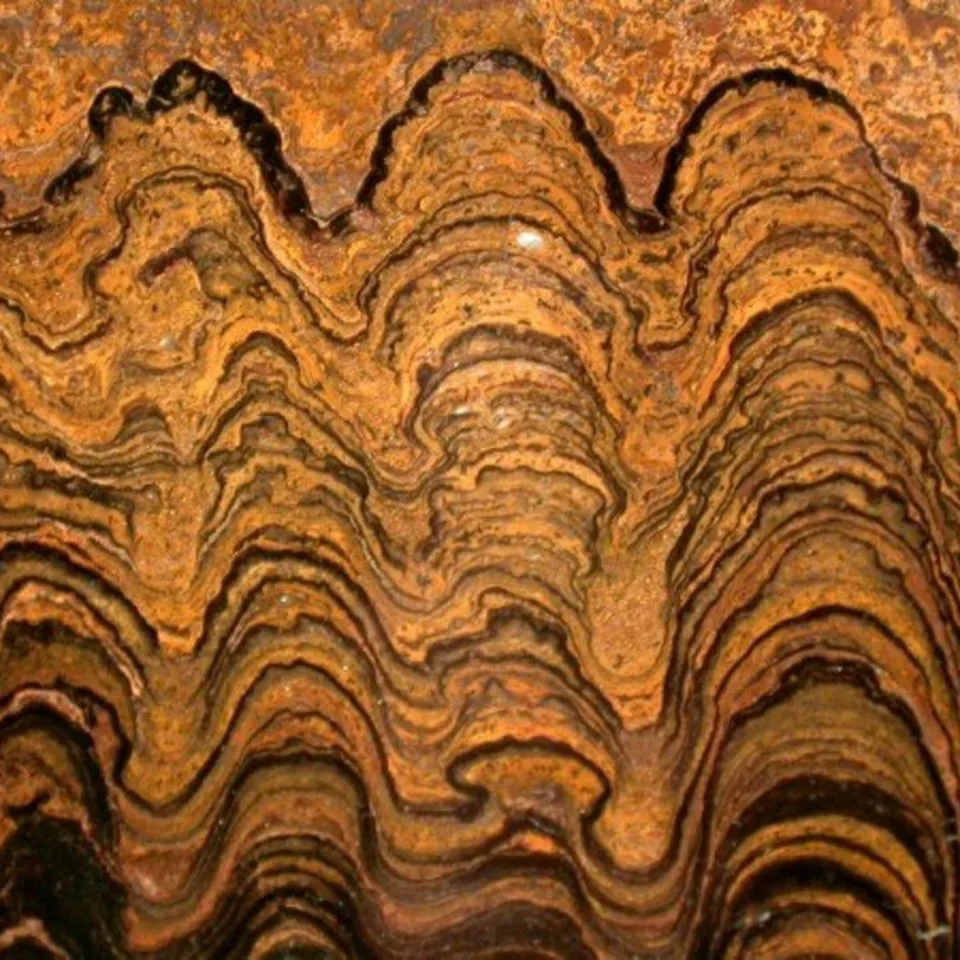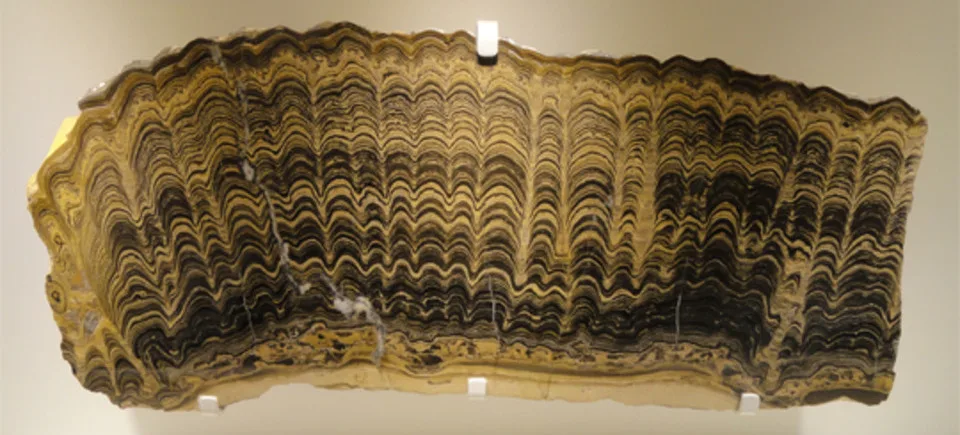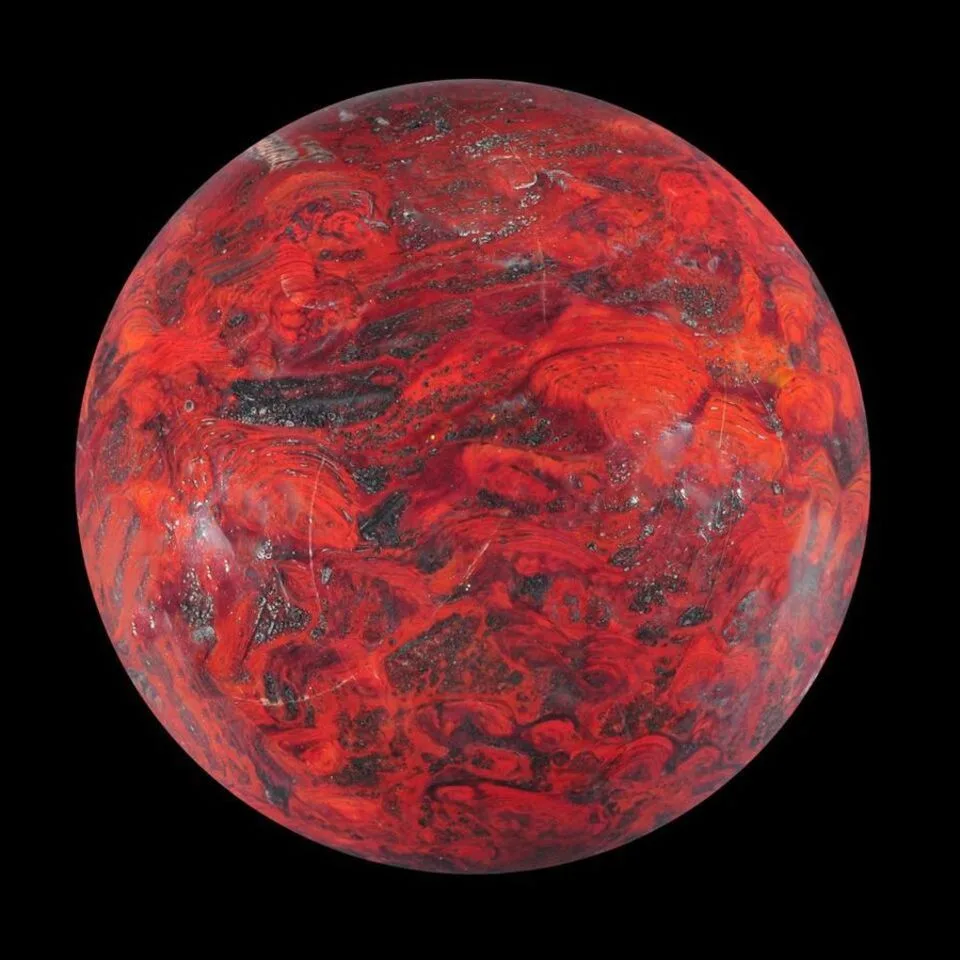Stromatalites
Stromatolites are among the world’s oldest fossils, some of which are over 3.5 billion years old. Stromatolites are structures formed by huge colonies of cyanobacteria, formerly called blue green algae, which contributed directly to the formation of the Earth’s atmosphere and its currently habitable state. In addition to existing in fossilized form, a colony of living stromatolites was discovered in Australia in 1956.
Visitors to the Shark Bay World Heritage Area can marvel at the archaic organisms, which live in the highly saline environment of Hamelin Pool. Stromatolites are formed by prokaryotic cyanobacteria, which have cells lacking a distinct nucleus. Prokaryotic bacteria are considered by some scientists to be the oldest and most primitive life form on Earth, with a well established fossil record stretching back for millions of years.
The cyanobacteria which dominate stromatolites process many of the building blocks of life, including oxygen, carbon, and nitrogen. Prokaryotic bacteria form an important part of the world’s biomass today, especially in the oceans. These bacteria thrive in extreme environments due to their relative lack of complexity. They are also very susceptible to being overwhelmed by more complex organisms, and are therefore often found in areas which other organisms cannot survive, or paired with other, more hardy forms of life. Because they play an important role in reducing carbon dioxide levels and emitting oxygen in exchange, many scientists have urged more research on these bacteria.
